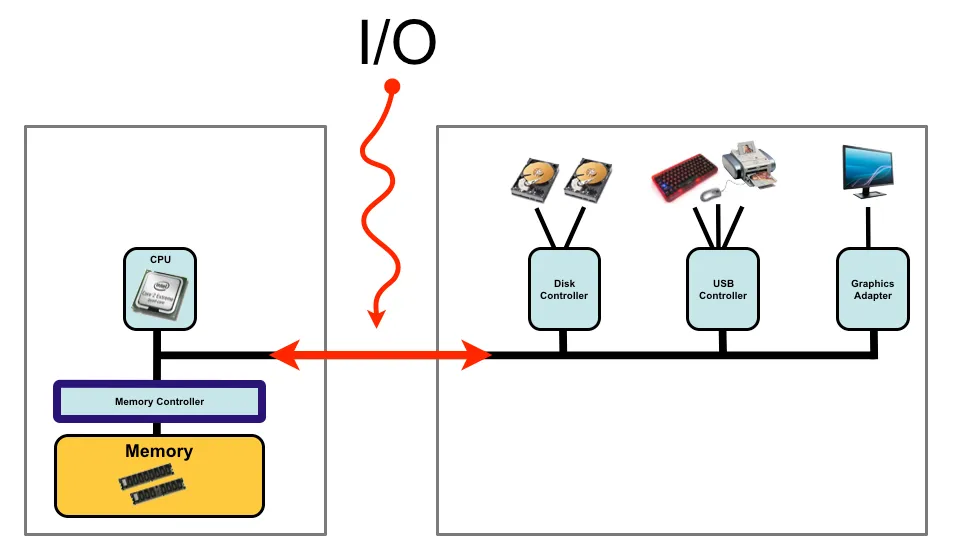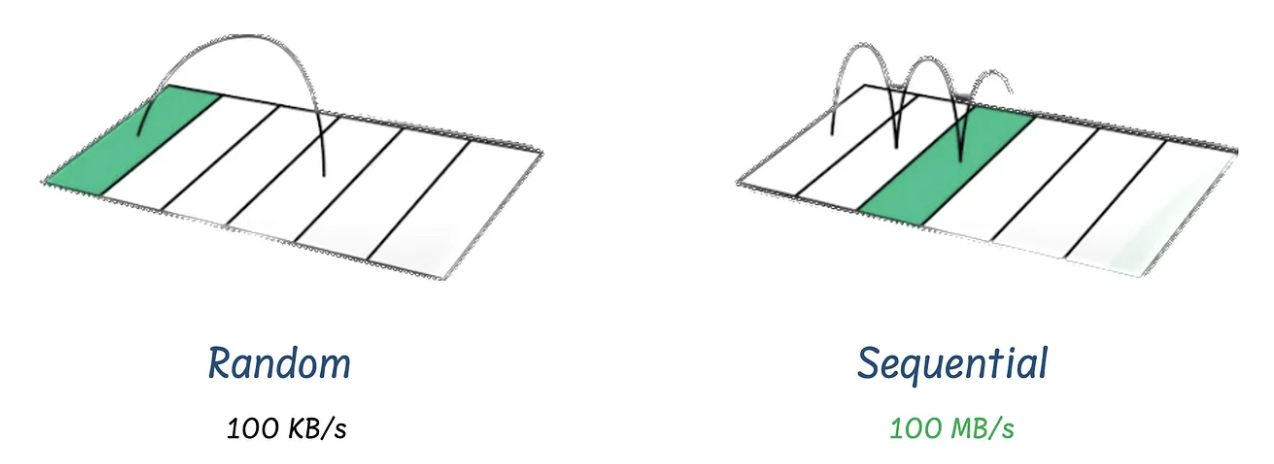Abstract
- Controlled by Device Controller
- Examples are like keyboard and monitor
Different performance between CPP and Java running on the same IO device
System.out.println()in Java is much slower thancoutin CPP.
couttypically performs buffered output by default, meaning it accumulates a certain amount of data before actually writing it to the output device. This reduces the number of System Call (系统调用) made, which can improve performance, especially when outputting a large amount of data.
System.out.println()in Java is synchronised for Thread Safety (线程安全), which can introduce some overhead too.However, buffer takes Main Memory, Byte is common buffer size. we need to find a balance between the system call we reduce with buffer and the the memory usage incurred by the buffer.
IO Operation

- The process of CPU communicating with the outside world. This can include interactions with humans, other computers, or peripheral devices as shown above. CPU is only involved in initiating the operation and processing the results of the operation!!!
Sequential IO
- IO Operation that reads from or writes to a storage device in a linear manner, so the data written is all clustered on the same physical area of the storage device
| Aspect | Sequential I/O | Random I/O |
|---|---|---|
| Access Pattern | Linear, ordered | Arbitrary, unordered |
| Performance | Generally higher due to reduced overhead | Can be slower, especially on mechanical drives |
| Typical Use Cases | Streaming media, backups, reading/writing large files | Database queries, accessing individual records/files |
Much faster HDD
HDD comes with a physical needle that needs to move around physically to write or retrieve data. This physical movement takes a lot of time.
With Sequential IO, we can make sure the data we write or retrieve live on the same physical spot, thus minimise physical movement. This property allows us to get
100MB/sthroughput from HDD! HDD is an order of magnitude cheaper than Flash Memory given the same storage size.
Useful Commands
read
- Built-in for retrieving data from standard input and assign the value to a bash variable
- The command below displays a prompt before the input. Only works for BASH, not for ZSH
read -p "Enter your input here: " variable
